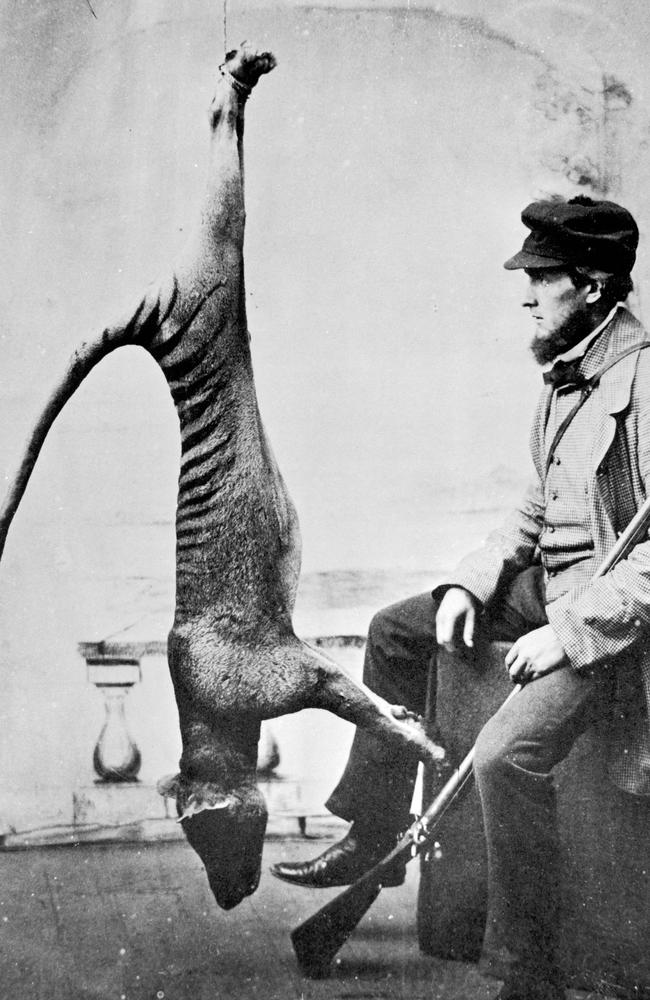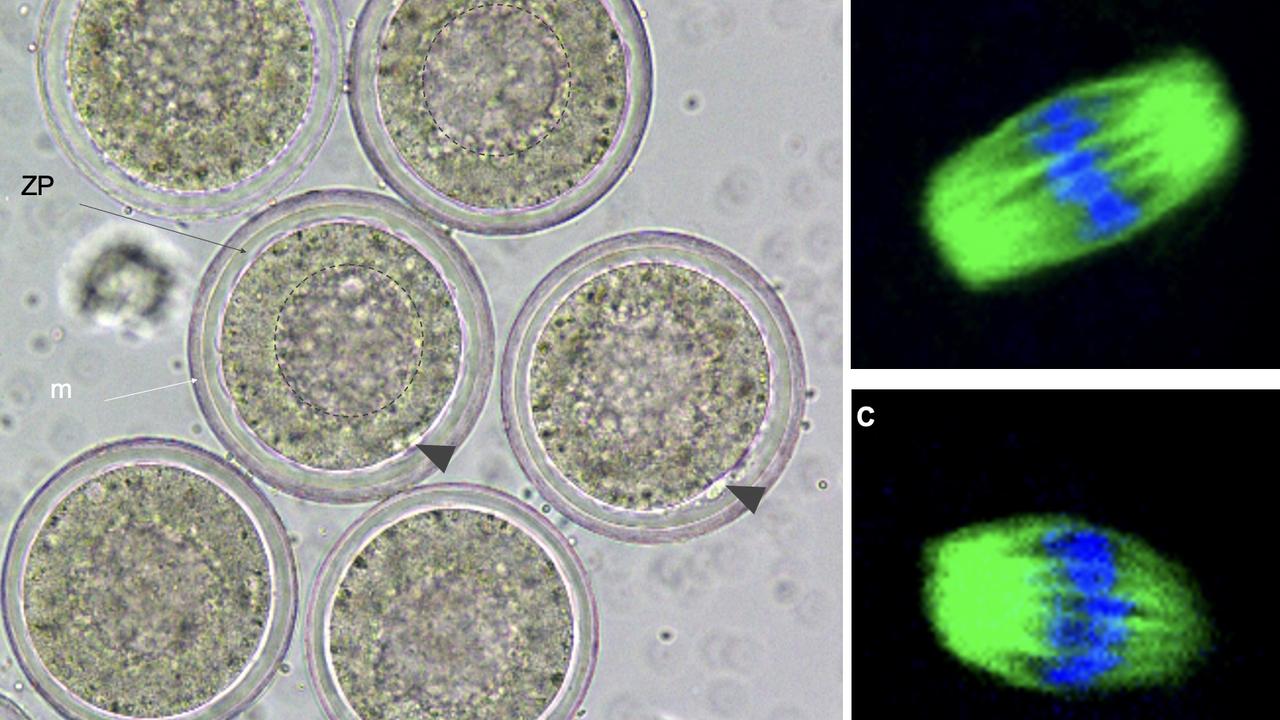Thylacine could be brought back from extinction in three years
The Tasmanian tiger could be brought back from extinction in just three years’ time thanks to a major breakthrough in genome sequencing. But exactly how will scientists rebirth the species?

READING LEVEL: ORANGE
Imagine trekking through the Tasmanian wilderness and coming face-to-face with a Tasmanian tiger. According to scientists, this could really happen by the year 2035.
The Tasmanian tiger could be brought back to life from extinction in as little as three years and returned to the wild within the next decade, thanks to a major breakthrough in genome sequencing.
A genome is all the genetic information of an organism. Genome sequencing helps scientists understand the DNA sequence of a creature – like a blueprint of the animal and how it functions.
A project funded by US de-extinction* and preservation company Colossal, in conjunction with the University of Melbourne, has produced a Tasmanian tiger genome which they believe will help to raise the species from the dead.

“It’s a big deal. The genome we have for it is even better than we have for most living animals, which is phenomenal,” Melbourne University scientist Professor Andrew Pask said.
On its website, Colossal said the relatively recent extinction of Tasmanian tigers, or thylacines, meant many specimens were well preserved.
Researchers used “one of the best preserved specimens known for any extinct species” to produce a comprehensive genome.
“This genome is a first for an extinct species, and a feat that many scientists believed would never be achieved for extinct species,” Colossal stated.
“It’s rare to have a sample that allows you to push the envelope in ancient DNA methods to such an extent,” Colossal chief scientist Dr Beth Shapiro said.
“We’ve delivered a record-breaking ancient genome that will accelerate* our thylacine de-extinction project.”

The researchers have also achieved world-firsts in assisted reproductive* technologies to help them prepare for a thylacine spawning program.
By bringing on ovulation* in dunnarts, small marsupials only found in Australia, the scientists could create new embryos* to use as hosts for “edited thylacine genomes.”
They have also been able to take fertilised single-cell embryos and develop them over halfway through pregnancy in an artificial uterus* device.
Third, scientists used dog and wolf DNA to find the genes which gave Tasmanian tigers their distinct jaw and skull shapes. After a series of experiments, thylacine DNA was put into mice, which changed the mice’s head shape.
The thylacine DNA was also successfully “knocked-in” to dunnart DNA. This was an important test, because dunnarts will be used as surrogates* for Tasmanian tigers in the de-extinction program.

The researchers said they are aiming to facilitate* the birth of a Tasmanian tiger within three years, and think the animals could be returned to the wild in 10 years.
The animals became extinct in 1936 when the last known thylacine died in a Hobart zoo.
On its website, Colossal states the animals were vital to the healthy function of the Tasmanian ecosystem and were once found spread across mainland Australia, north to New Guinea and south to Tasmania.
The Australian Museum website states the precise reason for extinction is unknown, but populations declined on the mainland as a result of competition with the dingo and perhaps as a result of being hunted by humans, not less than 2000 years ago.
Decline and extinction came about in Tasmania because of the introduction of dogs and widespread hunting from humans. Dingoes were never introduced to Tasmania.
POLL
GLOSSARY
- de-extinction: reversing the process of extinction, bringing extinct animal species back to life
- accelerate: speed up
- assisted reproductive: helping species reproduce using artificial or lab-based methods
- ovulation: when an animal eggs for fertilisation in the process of reproduction
- embryos: unborn offspring in the process of development
- artificial uterus: a human-made womb used to nurture a developing embryo in lab-conditions
- surrogates: a different species used to mother the thylacine
- facilitate: help something along
EXTRA READING
Tassie tiger could still exist in wilderness
Last Tassie tiger kept in cupboard
Tassie Tiger comeback on track
QUICK QUIZ
1. How far away are we from bringing Tasmanian tigers back from extinction, according to scientists?
2. When were Tasmanian tigers declared extinct?
3. Which small marsupial are scientists planning on using as surrogates for Tasmanian tigers?
4. When could Tassie tigers be reintroduced into the wild?
5. Which Australian animal was never introduced to Tasmania?
LISTEN TO THIS STORY
CLASSROOM ACTIVITIES
1. Tassie Tiger trivia
The Australian Museum website referenced in this story has lots of additional interesting information about thylacines. Visit the website, read the page on thylacines and create 10 Tassie Tiger trivia questions. Pair up and take turns testing your partner with your questions. Whoever can answer more of their partners questions correctly wins!
Time: allow 30 minutes to complete this activity
Curriculum Links: English; Science; Personal and Social Capability
2. Extension
The first line of this news story hooks us in by asking us to imagine coming face to face with a Tasmanian Tiger brought back from extinction. But what if the thylacine is only the first of many extinct species that science successfully returns to us? Write a short story about a world where animals that had become extinct roam the Earth again. Is it paradise or does all go wrong?
Time: allow 30 minutes to complete this activity
Curriculum Links: English
VCOP ACTIVITY
Summarise the article
A summary can be a really good way to grab the main idea plus some key points in the article as a highlight. Think of the summary like a little advertisement or extract you could use to encourage people to read the article in detail. You want to give them an overview of the article that includes the main idea (being able to tell the audience what the article is about in one sentence), plus a few of the key points of the information.
Remember to re-read your summary to check that it is clear, concise and makes sense to the audience who haven’t read the article yet. You need to make language choices that allow you to explain the information in only a few sentences.


